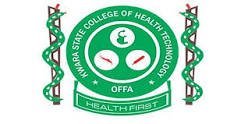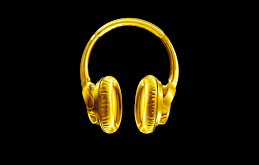For students who wish to take an art class in Nigerian universities, knowing the Start of the amount is essential to obtain admission. The cutting notes are the minimum assembly scores necessary to qualify for admission to various courses. This guide gives an overview of assembly cutting notes for all art courses for the 2025/2026 academic year and what each course implies.
Read also:
- Cut -off brand for all 2025/2026 science lessons
- Cut -off brand for all sales courses 2025/2026
List of courses for art students available in Nigerian universities
As when updating this article, below is the list of courses for art students in Nigerian universities:
- Arab
- Communication arts
- Criminology and security studies
- English language
- Beaux Arts
- French
- Hausa
- History
- Domestic economy
- Hospitality and tourism management
- Igbo
- Islamic studies
- Linguistic
- Mass communication
- Media and communication studies
- Music
- Peace and conflict resolution
- Show arts
- Philosophy
- Political science
- Psychology
- Religious studies
- Social work
- Sociology
- Theology
- Tourism studies
- Yoruba
In addition, arts education courses would also suit art students:
- Education and Arabic
- Christian education and religious studies
- English education and language
- Education and Fine Arts
- Education and French
- Education and History
- Islamic education and studies
- Education and music
- Education arts
General cutting mark for art courses 2025/2026
THE Minimum cut for art lessons Defined by Jamb should be 180 For the academic year 2025/2026. However, some competitive programs may require higher scores. You will find below the specific cutting brands for various art courses in Nigerian universities.
Assembly cutting brands for art courses 2025/2026
Here is a detailed list of art courses and their expected editing cutting marks:
| Course | Start of the amount |
|---|---|
| Arab | 180 – 200 |
| Communication arts | 180 – 200 |
| Criminology and security studies | 200 – 220 |
| English language | 180 – 200 |
| Beaux Arts | 180 – 200 |
| French | 180 – 200 |
| Hausa | 180 – 200 |
| History | 180 – 200 |
| Domestic economy | 180 – 200 |
| Hospitality and tourism management | 180 – 200 |
| Igbo | 180 – 200 |
| Islamic studies | 180 – 200 |
| Linguistic | 180 – 200 |
| Mass communication | 200 – 220 |
| Media and communication studies | 200 – 220 |
| Music | 180 – 200 |
| Peace and conflict resolution | 180 – 200 |
| Show arts | 180 – 200 |
| Philosophy | 180 – 200 |
| Political science | 200 – 220 |
| Psychology | 200 – 220 |
| Religious studies | 180 – 200 |
| Social work | 180 – 200 |
| Sociology | 180 – 200 |
| Theology | 180 – 200 |
| Tourism studies | 180 – 200 |
| Yoruba | 180 – 200 |
Arts education lessons
These education courses are linked to the arts and are suitable for students interested in teaching artistic materials:
| Course | Start of the amount |
|---|---|
| Education and Arabic | 180 – 200 |
| Christian education and religious studies | 180 – 200 |
| English education and language | 180 – 200 |
| Education and Fine Arts | 180 – 200 |
| Education and French | 180 – 200 |
| Education and History | 180 – 200 |
| Islamic education and studies | 180 – 200 |
| Education and music | 180 – 200 |
| Education arts | 180 – 200 |
Admission advice in art lessons
- Aim higher than the minimum: Try to score higher than the brand limit for your favorite course, especially if it is competitive, such as mass communication or political science.
- Prepare for the post-utme: Many universities carry out their own exams after ham. Study well to improve your score during this stage.
- Choose the lessons carefully: If your score is close to the minimum cut, remember to choose lessons with lower cutting brands to increase your chances of admission.
- Check the specific university requirements: Some universities have unique cut -off marks for certain courses, so it is better to confirm with your target school.
Conclusion
Understanding the cutting brands for art lessons is the key to plan your admission. By knowing the expected minimum scores, you can focus on the meeting and even exceed the requirements of your chosen course. For more precise information, it is advisable to check with your favorite university, because the cutting notes can vary depending on the institution and the competitiveness of the courses.
Remember that a higher score improves your chances of studying the desired course. Good luck with your preparation for the amount!
 JamzNG Latest News, Gist, Entertainment in Nigeria
JamzNG Latest News, Gist, Entertainment in Nigeria








